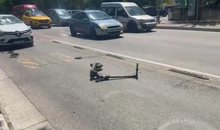
 Flash News
Flash News
Drenova prison police officer arrested for bringing drugs and illegal items into cell
Lavrov: NATO is risking self-destruction with new military budget
Kurti and Vučić "face off" tomorrow in Skopje
Construction worker dies after falling from scaffolding in Berat
The prosecution sends two Korça Municipality officials to trial
Study: Virus mutations have made children massive spreaders of Covid-19

These days scientists have little choice but to play the role of diplomat, especially when they have unpleasant truths to report. The issue of school closure, and the fact how long this situation will continue is definitely one of these uncomfortable topics.
The issue was the focus of an interesting meeting at Zoom on January 4, where scientists led by Michael Wagner, professor of microbiology at the University of Vienna, formally presented an extensive study on the spread of coronavirus in Austrian schools.
In mid-December, Wagner told Der Spiegel that the study found that school children were as likely to be infected with the new coronavirus as their teachers.
The only difference is that their infection usually remains undetected, as they rarely show symptoms. As such, the risk of infection by children is minimized. Wagner and a group of scientists at medical universities in Graz, Linc and Inbruck have shed more light on these cases.
They have started testing teachers and children from first to eighth grade, in more than 240 schools across the country. And are relying on the standard PCR test. The subjects examined had no symptoms, so they had no idea whether or not they were infected with SARS-CoV-2. So far, up to 1.42 percent of study participants have tested positive - and the rate was the same for both children and adults.
Among school students, there was no difference between age groups. Many elementary school children were infected, as were high school children. This finding contradicts the old belief that younger children are "spared" mainly from SARS-CoV-2 infections.
Prominent German virologist Christian Drosten of the Charité University Hospital in Berlin, who advised the German government to close schools during the first coronavirus outbreak in the spring of 2020, believes the data from the Austrian study are "really important, as they confirm what is being seen in England.
The last major UK study on children yielded similar results. From mid-November to early December, students aged 13-17 turned out to be more positive than any other age group. One in 50 students tested positive for SARS-CoV-2.
Një e dhënë e studimit austriak është veçanërisht e spikatur nga pikëpamja socio-politike: Shkalla e infeksioneve të pazbuluara është dy herë më e lartë në zonat e varfra sesa në ato më të pasura. “Kjo nuk do të thotë domosdoshmërisht që kushtet në shkollat në zonat përkatëse janë të ndryshme. Por kjo dukuri mund të vijë për shkak të mjedisit shoqëror. Për shembull, prindërit që nuk mund të punojnë nga shtëpia, kanë më shumë gjasa t`i dërgojnë fëmijët e tyre në shkollë, edhe nëse ai apo ajo shfaq simptoma të lehta”-shpjegon Peter Vil i Universitetit Mjekësor të Insbrukut, që bashkë me Vagner, është një nga drejtuesit e konsorciumit kërkimor.
Në krye të shqetësimi është varianti i ri virusit, i quajtur B.1.1.7, që u identifikua për herë të parë në Britani, por që ka kohë që ka filluar të qarkullojë në vende të tjera, përfshirë Gjermaninë dhe Austrinë.
Ai duket se është 50-70 për qind më infektiv sesa virusi me të cilin jemi marrë deri tani. Gjithashtu, duket se B.1.1.7 përhapet më lehtë midis fëmijëve dhe adoleshentëve. “Unë kam dëgjuar shumë rreth asaj se si fëmijët janë më infektivë tani dhe kontribuojnë më shumë nëtransmetimin e virusit për shkak të variantit B.1.1.7”-shkroi në Twitter Depti Gurdasani, epidemiologe dhe mjeke në Universitetin Mbretëresha Meri në Londër.
But, she adds that it was "a myth", the claim so far that children were not transmitting the disease. Gurdasani told "Der Spiegel" that the evidence is stubborn. "It is clear from evidence across the globe and within the UK that schools have contributed significantly to the transmission of the virus to the community," she said. / Bota.al
Latest news



Second hearing on the protected areas law, Zhupa: Unconstitutional and dangerous
2025-06-30 22:18:46
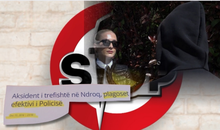

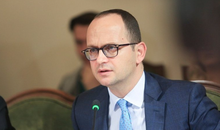
Israel-Iran conflict, Bushati: Albanians should be concerned
2025-06-30 21:32:42

Fuga: Journalism in Albania today in severe crisis
2025-06-30 21:07:11
"There is no room for panic"/ Moore: Serbia does not dare to attack Kosovo!
2025-06-30 20:49:53

Temperatures above 40 degrees, France closes nuclear plants and schools
2025-06-30 20:28:42
Lavrov: NATO is risking self-destruction with new military budget
2025-06-30 20:13:54
Turkey against the "Bektashi state" in Albania: Give up this idea!
2025-06-30 20:03:24

Accused of sexual abuse, producer Diddy awaits court decision
2025-06-30 19:40:44



Kurti and Vučić "face off" tomorrow in Skopje
2025-06-30 18:44:12
Tourism: new season, old problems
2025-06-30 18:27:23


Construction worker dies after falling from scaffolding in Berat
2025-06-30 17:51:44
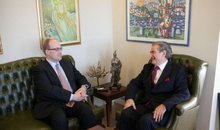



Almost free housing: East Germany against depopulation
2025-06-30 16:43:06

Hamas says nearly 60 people killed in Gaza as Trump calls for ceasefire
2025-06-30 16:14:15
Drownings on beaches/ Expert Softa: Negligence and incompetence by institutions!
2025-06-30 16:00:03


European ports are overloaded due to Trump tariffs
2025-06-30 15:30:44
The prosecution sends two Korça Municipality officials to trial
2025-06-30 15:19:54

Lezha/ Police impose 3165 administrative measures, handcuff 19 drivers
2025-06-30 14:55:04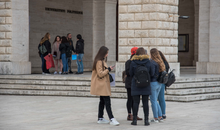
Young people leave Albania in search of a more sustainable future
2025-06-30 14:47:52
Record-breaking summer, health threats and preventive measures
2025-06-30 14:36:19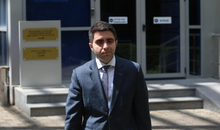

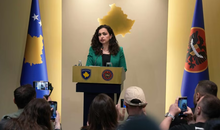
Constitution of the Parliament, Osmani invites political leaders to a meeting
2025-06-30 14:07:54

Heat wave 'invades' Europe, Spain records temperatures up to 46 degrees Celsius
2025-06-30 13:42:02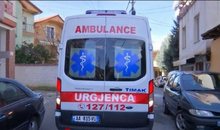
Accident in Vlora, car hits 2 tourists
2025-06-30 13:32:16

Kurti confirms participation in today's official dinner in Skopje
2025-06-30 13:03:27

Fight between 4 minors in Kosovo, one of them injured with a knife
2025-06-30 12:38:45

Report: Teenage girls the loneliest in the world
2025-06-30 12:20:40
Commissioner Kos and Balkan leaders meet in Skopje on Growth Plan
2025-06-30 12:07:59
Wanted by Italy, member of a criminal organization captured in Fier
2025-06-30 11:55:53
Hundreds of families displaced by wave of Israeli airstrikes in Gaza
2025-06-30 11:45:17
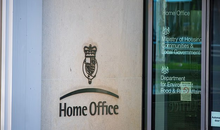
Zenel Beshi: The criminal who even 50 convictions won't move from Britain
2025-06-30 11:23:19
A new variant of Covid will circulate during the summer, here are the symptoms
2025-06-30 11:14:58
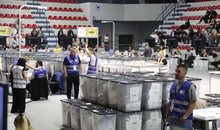
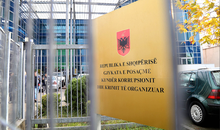
"Partizani" case, trial postponed to July 21 at the Special Court
2025-06-30 10:41:05
Uncontrolled desire to steal, what is kleptomania, why is it caused
2025-06-30 10:30:08
Requested change of security measure, hearing for Malltez postponed to July 7
2025-06-30 10:24:32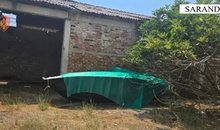


Output per working hour in Albania 35% lower than the regional average
2025-06-30 09:54:35

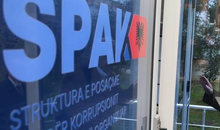
The trial for the "Partizani" file begins today
2025-06-30 09:27:57
22 fires in the last 24 hours in the country, 2 still active
2025-06-30 09:21:28
How is the media controlled? The 'Rama' case and government propaganda
2025-06-30 09:13:36
German top diplomat: Putin wants Ukraine to capitulate
2025-06-30 09:00:07
Foreign exchange, how much foreign currencies are sold and bought today
2025-06-30 08:44:38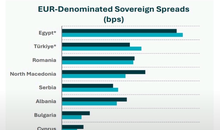
Chart/ Sovereign risk for Albania from international markets drops significantly
2025-06-30 08:26:38
Horoscope, what do the stars have in store for you?
2025-06-30 08:11:44
Clear weather and passing clouds, here is the forecast for this Monday
2025-06-30 07:59:32
Morning Post/ In 2 lines: What mattered yesterday in Albania
2025-06-30 07:47:37
Milan make official two departures in attack
2025-06-29 21:57:23
6 record tone
2025-06-29 21:30:46
4-year-old girl falls from balcony in Lezha, urgently taken to Trauma
2025-06-29 21:09:58


Assets worth 12 million euros seized from cocaine trafficking organization
2025-06-29 19:39:43
Fire in Durrës, Blushi: The state exists only on paper
2025-06-29 19:17:48

Fire endangers homes in Vlora, helicopter intervention begins
2025-06-29 18:27:51
France implements smoking ban on beaches and parks
2025-06-29 18:02:08
England U-21 beat Germany to become European champions
2025-06-29 17:42:49
Trump criticizes Israeli prosecutors over Netanyahu's corruption trial
2025-06-29 17:08:10
Street market in Durrës engulfed in flames
2025-06-29 16:52:57

UN nuclear chief: Iran could resume uranium enrichment within months
2025-06-29 16:03:24
Albanian man dies after falling from cliff while climbing mountain in Italy
2025-06-29 15:52:01
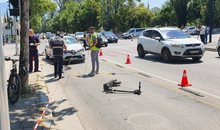
Another accident with a single-track vehicle in Tirana, a car hits a 17-year-old
2025-06-29 15:07:15
While bathing in the sea, a vacationer in Durrës dies
2025-06-29 14:54:01
Sentenced to life imprisonment, cell phone found in Laert Haxhiu's cell
2025-06-29 14:26:40
77 people detained in protest, Vučić warns of new arrests
2025-06-29 14:07:46